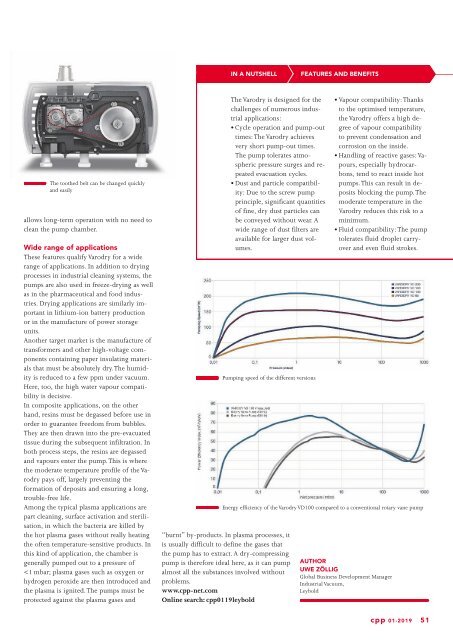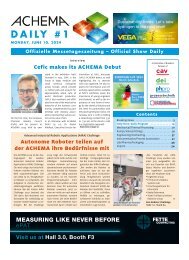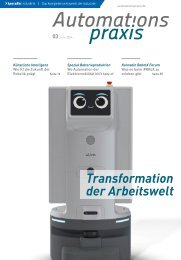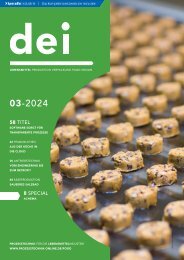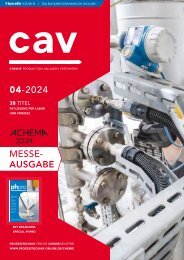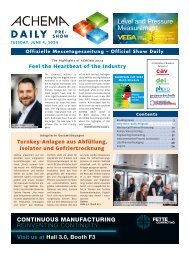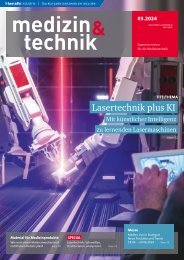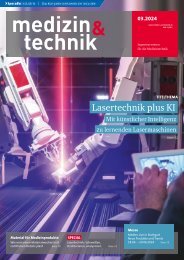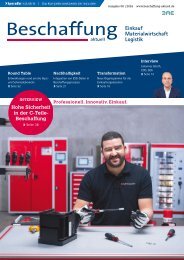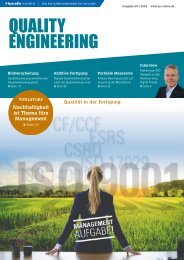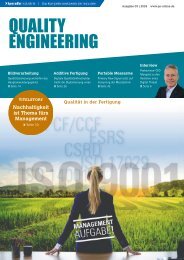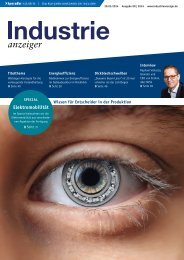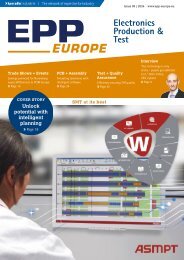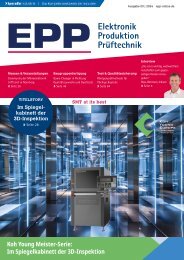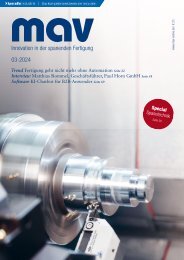cpp – Process technology for the chemical industry 01.2019
The journal cpp - Process technology for the chemical industry reports about processes, plants, apparatus and components for the chemical and pharmaceutical industry. Further topics are IT technologies, industry 4.0, digital production, MSR and automation technology and process analysis technology. The content spectrum is rounded off by explosion protection, plant safety, occupational health and safety, maintenance, site management and energy management.
The journal cpp - Process technology for the chemical industry reports about processes, plants, apparatus and components for the chemical and pharmaceutical industry. Further topics are IT technologies, industry 4.0, digital production, MSR and automation technology and process analysis technology. The content spectrum is rounded off by explosion protection, plant safety, occupational health and safety, maintenance, site management and energy management.
Create successful ePaper yourself
Turn your PDF publications into a flip-book with our unique Google optimized e-Paper software.
IN A NUTSHELL:<br />
FEATURES AND BENEFITS<br />
The too<strong>the</strong>d belt can be changed quickly<br />
and easily<br />
allows long-term operation with no need to<br />
clean <strong>the</strong> pump chamber.<br />
Wide range of applications<br />
These features qualify Varodry <strong>for</strong> a wide<br />
range of applications. In addition to drying<br />
processes in industrial cleaning systems, <strong>the</strong><br />
pumps are also used in freeze-drying as well<br />
as in <strong>the</strong> pharmaceutical and food industries.<br />
Drying applications are similarly important<br />
in lithium-ion battery production<br />
or in <strong>the</strong> manufacture of power storage<br />
units.<br />
Ano<strong>the</strong>r target market is <strong>the</strong> manufacture of<br />
trans<strong>for</strong>mers and o<strong>the</strong>r high-voltage components<br />
containing paper insulating materials<br />
that must be absolutely dry. The humidity<br />
is reduced to a few ppm under vacuum.<br />
Here, too, <strong>the</strong> high water vapour compatibility<br />
is decisive.<br />
In composite applications, on <strong>the</strong> o<strong>the</strong>r<br />
hand, resins must be degassed be<strong>for</strong>e use in<br />
order to guarantee freedom from bubbles.<br />
They are <strong>the</strong>n drawn into <strong>the</strong> pre-evacuated<br />
tissue during <strong>the</strong> subsequent infiltration. In<br />
both process steps, <strong>the</strong> resins are degassed<br />
and vapours enter <strong>the</strong> pump. This is where<br />
<strong>the</strong> moderate temperature profile of <strong>the</strong> Varodry<br />
pays off, largely preventing <strong>the</strong><br />
<strong>for</strong>mation of deposits and ensuring a long,<br />
trouble-free life.<br />
Among <strong>the</strong> typical plasma applications are<br />
part cleaning, surface activation and sterilisation,<br />
in which <strong>the</strong> bacteria are killed by<br />
<strong>the</strong> hot plasma gases without really heating<br />
<strong>the</strong> often temperature-sensitive products. In<br />
this kind of application, <strong>the</strong> chamber is<br />
generally pumped out to a pressure of<br />


